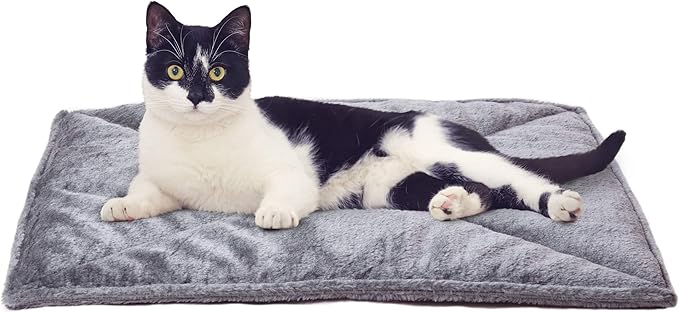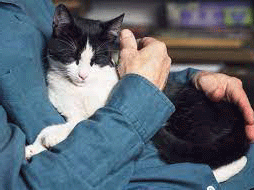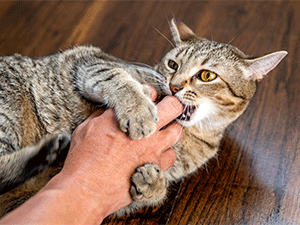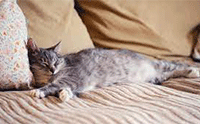The bond between a cat and its owner is profound, often filled with joy, companionship, and unconditional love. When the time comes to face the reality of a cat nearing the end of its life, it can be one of the most challenging experiences for any pet owner. Understanding the signs that your cat may be dying can help you provide the best care during this difficult time. Additionally, knowing how to comfort your feline friend can ease both their pain and your own as you navigate this emotional journey together.
Other Topics You Might Like
Helpful Products You Might Like
Burt's Bees Waterless Shampoo for Pets Cat

Dremel Paw Control Cordless & Rechargeable Pet Grooming Tool Kit

Furhaven ThermaNAP Self-Warming Cat Bed
"(Paid Links)" 
Signs Your Cat May Be Dying
Recognizing the signs that your cat is nearing the end of its life can be crucial in providing appropriate care and comfort. Here are some common indicators:

Changes in Appetite
One of the most noticeable signs that a cat may be dying is a significant change in appetite. Cats that are ill often refuse to eat or drink, leading to weight loss and dehydration. If your cat suddenly stops eating or shows little interest in food they once loved, this could be a red flag.
What to do
Monitor their food and water intake closely. If they show a persistent lack of interest, consult your veterinarian for advice.
Altered Behavior

Behavioral changes are another key indicator of a cat’s declining health. A once-active and social cat may become withdrawn, hiding in secluded places and avoiding interaction with family members. Conversely, some cats may become unusually clingy or vocal as they seek comfort.
What to do
Pay attention to your cat’s behavior. Offer them a safe space where they feel comfortable and secure. Spend quality time with them, even if they prefer solitude.
Physical Symptoms
Physical signs can often indicate a cat is in distress or nearing death. Look for the following:
Lethargy
A decrease in energy levels or an unusual reluctance to move.
Difficulty Breathing
Labored or shallow breathing can indicate respiratory distress.
Abnormal Heart Rate
A significantly increased or decreased heart rate may be observed.
What to do
If you notice any of these symptoms, it’s crucial to consult your veterinarian as soon as possible for evaluation and possible intervention.
Grooming Changes
Cats are known for their grooming habits, but when they become ill, they may neglect their fur. A cat that stops grooming may develop matted fur, and their coat may appear dull or dirty. This change can also indicate a lack of energy or pain.
What to do
If you notice changes in your cat's grooming habits, gently brush their fur to help maintain cleanliness and comfort.
Incontinence or Difficulty Moving
As a cat nears the end of life, you may observe signs of incontinence (loss of bladder or bowel control) or difficulty moving. They may struggle to get up or walk, indicating pain or weakness.
What to do
Provide them with a comfortable place to rest and ensure they have easy access to food, water, and a litter box. If these issues become severe, consult your veterinarian for potential solutions.
How to Comfort Your Dying Cat
When you realize that your cat may be approaching the end of their life, providing comfort becomes a top priority. Here are several ways to support them:
Create a Comfortable Space
Make a cozy, quiet environment where your cat can relax. Use soft bedding, such as a favorite blanket or bed, and place it in a low-traffic area of your home. Familiar smells, like their favorite toys or even a piece of your clothing, can provide additional comfort.

Stay Close and Provide Affection
Your presence can be incredibly soothing to your cat during this time. Gently pet them and speak softly to reassure them. Physical touch can be very comforting, so try to spend time with them, even if they are mostly resting.
Monitor Their Needs
As your cat’s condition declines, it’s essential to monitor their basic needs. Make sure they have easy access to water and food, and help them as necessary. If they refuse to eat, consider offering them their favorite treats or moist food to encourage them to eat.
Consult with a Veterinarian
Discussing your cat’s condition with a veterinarian can provide clarity and options for care. They may suggest palliative care to keep your cat comfortable or discuss the possibility of euthanasia if the suffering becomes unbearable. Making these decisions can be incredibly difficult, but a veterinarian can help guide you through the process.
Conclusion
Recognizing the signs that your cat is dying can be heartbreaking, but being informed allows you to provide the best care and comfort possible during their final days. Cherishing the time you have left together, offering affection, and consulting with a veterinarian will help ensure that your beloved companion feels loved and cared for. While the pain of losing a pet is profound, remember that the bond you shared will always remain in your heart.
